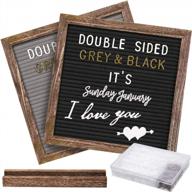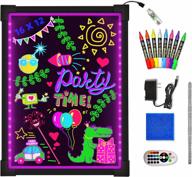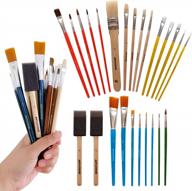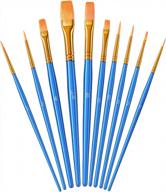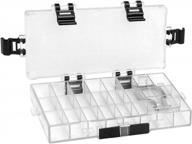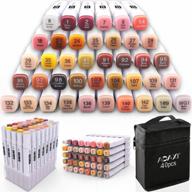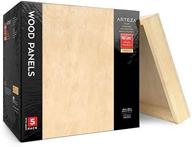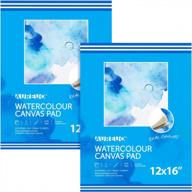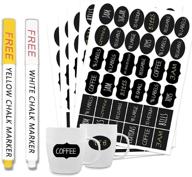Choosing the Right Canvas for Your Next Art Project
When starting a new painting or artwork, one of the first decisions you need to make is which type of canvas to use. Canvas comes in many varieties, and some are better suited for certain mediums and techniques than others.
Canvas Fabrics
Canvas can be made from various fabrics, with the most common being:
- Cotton - Natural fiber canvas with a slight texture. Most versatile option.
- Linen - Made from flax plant fibers, linen has an uneven, rougher texture.
- Synthetic - Polyester or acrylic canvas is cheaper but lacks the natural feel of cotton or linen.
Canvas Textures
The texture or "tooth" of the canvas refers to the woven structure of the fabric. There are a few basic texture types:
- Smooth - Tight, even weave good for precise detail work.
- Medium tooth - Light yet visible texture suitable for most painting techniques.
- Rough - Looser open weave better for abstract art using thick paint.
Pre-Stretched vs Roll Canvas
Canvas can be purchased wrapped around stretcher bars as pre-stretched canvas, or in rolls that you stretch yourself. Considerations include:
| Pre-Stretched Canvas | Roll Canvas |
|---|---|
| - More convenient, ready to use | - Must be hand stretched |
| - Limited size options | - Customizable sizes |
| - Potential warping over time | - Stays tighter when self-stretched |
Standard Canvas Sizes
There are typical canvas sizes used for different painting shapes:
- Square canvases (12x12", 18x18")
- Rectangle canvases (16x20", 24x36")
- Panoramic canvases (12x36", 16x48")
- Oval and circular canvases
However, custom sizes are also available if you need a more unique dimension.
Primed vs Unprimed
Canvas can come pre-primed with acrylic gesso, or unprimed:
- Primed - Ready for painting, better for beginners.
- Unprimed - Must be sized and primed yourself first.
Choosing the ideal canvas for your painting project takes some consideration. Assess the medium you want to use, the level of texture desired, the appropriate size for your subject matter, and whether priming it yourself or buying it pre-primed is preferred. With the right canvas selected upfront, you can achieve the artistic effects you envision.
Different Types of Canvas for Painting
Canvas is the woven fabric surface used for painting that provides the foundation for acrylic, oil, and other media. There are a few main options when it comes to canvas types:
Cotton Canvas
Cotton canvas is the most popular type of painting surface. The benefits of cotton canvas include:
- Versatile for many painting techniques
- Durable and long-lasting
- Moderate amount of texture
- Good for both fine details and thick paint
Cotton duck canvas has an even weave and smooth surface perfect for detail work. Canvas made from cotton is a great all-around option suitable for beginners to professionals.
Linen Canvas
Linen canvas is made from flax plant fibers and has some key qualities:
- Distinctive rough, uneven texture
- Durable and resistant to stretching
- Often used for oil painting
- On the expensive side
The natural fibers in linen canvas provide more texture, absorbing oil paints nicely. Linen works well for impasto techniques.
Synthetic Canvas
Synthetic canvas is usually made from polyester or acrylic materials. The main attributes of synthetic canvas include:
- Inexpensive option
- Lacks natural canvas feel
- Doesn't absorb paints as well
- Good for practice and student grade work
While synthetic canvas is cheaper, it may not last as long or provide the ideal painting surface compared to natural fiber cotton and linen canvases.
Weighing the characteristics of cotton, linen and synthetic canvas helps determine the ideal surface for different painting techniques and budgets. Many artists opt for trustworthy medium weave cotton canvas for its versatility and quality.
Canvas Surface Textures and Their Uses
The texture or "tooth" of canvas refers to the woven structure of the fabric and how tight or loose the threads are. Surface textures affect how paints interact with the canvas.
Smooth Canvas Texture
Smooth canvas has a tightly woven, even surface with very little tooth. Features of smooth canvas include:
- Allows for precise brushwork and details
- Well-suited for mediums like acrylics and watercolor
- Not ideal for thick impasto painting techniques
- Gessoes like acrylic stay on the surface rather than absorbing in
Smooth canvas would be a good choice for painters doing controlled brushwork, glazing techniques, graphic styles, and other work where fine details need to stand out.
Medium Tooth Canvas
Medium or mid-tooth canvas has a moderate woven texture with a decent amount of tooth. Qualities include:
- Versatile for most painting techniques from realism to abstraction
- Allows some textural dimension with impasto work
- Gessoes penetrate the fibers a bit better than smooth canvas
Since it strikes a nice balance between smooth and rough, medium tooth cotton canvas tends to be a popular all-purpose option.
Rough Canvas Texture
Rough canvas has a very open and visible weave with deep texture. Painting on rough canvas:
- Allows paint to be applied thickly with palette knife or brush
- Provides obvious woven pattern in the work
- Can make fine details more challenging
- Absorbs gesso and paint into the deep crevices
Rougher canvas would suit painters using expressive, gestural techniques with very thick paint application. The pronounced tooth adds tactile dimension.
The ideal canvas texture comes down to the painting style and the effects you want to achieve. Smooth, medium and rough offer different creative possibilities.
Pre-Stretched vs Roll Canvas for Painting
When preparing for a painting project, one decision is whether to use pre-stretched canvas or canvas from a roll that requires stretching yourself. There are pros and cons to each option.
Pre-Stretched Canvas
Pre-stretched canvas comes mounted onto wooden stretcher bars in a frame. Benefits include:
- Convenient and ready to use out of the package
- Available in standard sizes from 8"x10" to 48"x60"
- Portable for painting indoors or outdoors
- Can be restretched if canvas gets loose over time
Potential downsides of pre-stretched canvas include limited size options and potential warping of the wooden stretcher bars over time if not stored properly.
Roll Canvas
Canvas roll that requires stretching onto stretcher bars has advantages like:
- Custom size flexibility for any dimensions needed
- Suits large scale canvases for murals or wide panoramas
- Stay tighter when hand stretched vs potential looseness of pre-made
- Cost effective for buying canvas in bulk
The main drawback of roll canvas is that it requires the extra time and effort to properly stretch and prepare the canvas yourself.
| Pre-Stretched Canvas | Roll Canvas |
|---|---|
| More convenient, ready to paint | Takes time to stretch and prime |
| Set standard sizes | Fully customizable sizes |
| Potential to warp over time | Stays tight when hand stretched |
Weigh your need for convenience vs full customization when deciding between pre-stretched and roll canvas for your next art piece.
Top products in 🔳 Boards & Canvas
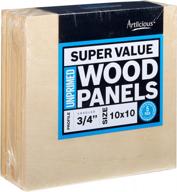

20 Review

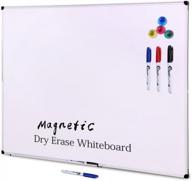

39 Review

How Amazon Prime Benefits Frequent Canvas and Board Buyers
For artists who regularly purchase their painting surfaces and supplies online, an Amazon Prime membership can make the process smoother, faster, and more affordable. Here are some of the key benefits Prime offers frequent buyers of boards and canvas.
Free Two-Day Shipping
One of the biggest perks of Prime is free two-day shipping on eligible items. For artists buying bulky or heavy items like canvas boards, stretched canvas, and easels, the shipping costs can really add up buying from various retailers. With Prime two-day shipping, you get your art materials fast without inflated shipping fees.
Prime-Exclusive Deals
Amazon Prime members get exclusive access to special deals and discounts that non-members can't get. This includes Lightning Deals and Prime Day events where prices on art supplies are slashed for a short period. Prime members can take advantage of these limited-time bargains on canvas, brushes, paints, and other essentials from top brands.
Prime Wardrobe
The Prime Wardrobe feature allows members to order clothes to try on at home before buying. This is helpful for painters to test smocks, aprons, and other artist apparel to find the right fit and feel before committing to the purchase. Return shipping is free which makes experimenting convenient.
Prime Video
Prime Video comes with a membership providing unlimited streaming of movies, TV shows, and Amazon Originals. For artists, this is a great resource to watch free art tutorials, documentaries on famous painters, and art education content to improve skills.
Other Prime Benefits
Other Prime perks include Prime Music for unlimited ad-free listening, Prime Reading for free Kindle books and mags, Prime Gaming for free games and loot, unlimited photo storage with Prime Photos, and more. The wide range of benefits add up to great overall value.
For devoted artists and painters that rely on ordering many art supplies online, an Amazon Prime subscription can be extremely useful. From fast free shipping to exclusive deals and content, Prime helps save time and money.
Discover The Best Boards And Canvas Products For Your Artistic Journey.
Boards and canvas are essential for artists to create captivating and fulfilling artwork. Here are some of the best products to consider for your artistic journey:
Another interesting products
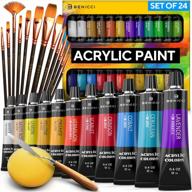

37 Review

What Are The Different Types Of Canvas Products Available For Artists?
There are several types of canvas products available for artists, including:
When choosing a canvas product, artists should consider factors such as the weight of the fabric, the material it is made from, and the surface preparation, as each combination will give a different painting experience and affect the final appearance of the painting.
Similar products
What Are The Differences Between Cotton And Linen Canvas?
The differences between cotton and linen canvas are as follows:
Cotton Canvas:
Linen Canvas:
Overall, linen canvas is considered the canvas of choice for artists who want their paintings to stand the test of time, while cotton canvas is more flexible and affordable. The choice between the two depends on an artist's preferences, budget, and desired painting style.





